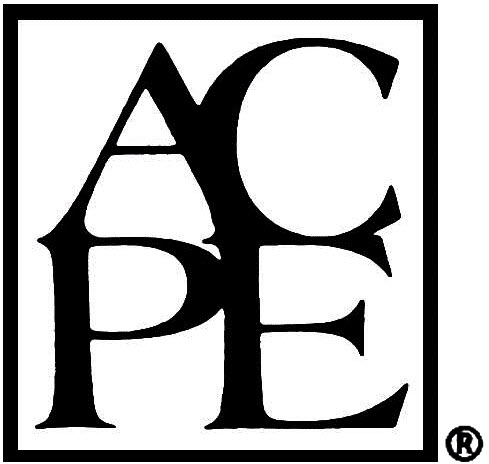It Is No Longer Just an Opioid Problem: Polysubstance Misuse and the Fourth Wave of the Overdose Crisis
Pain Management/Opioids CE for Pharmacy Techs
Are you a Pharmacist? Check out the Pharmacist version of this course.
Course Summary
The drug overdose crisis in the United States began in the 1990s. This crisis was fueled by a growth in opioid prescriptions by healthcare providers and is referred to as the “first wave.” The first wave was followed by a second wave, driven by a rise in heroin use. A third wave followed, which was highlighted by the use of synthetic opioids. Now, a fourth wave has emerged in the opioid overdose crisis. This wave is marked by polysubstance misuse involving the use of fentanyl combined with stimulants. These waves have caused a progressively higher number of drug overdose deaths in the United States. This activity reviews the distinctive features of each wave of the drug overdose crisis and the increasing role of polysubstance misuse in the fourth wave. It also discusses the successes and failures of regulatory and public policy decisions that have been applied to combating this drug overdose crisis and the dangers and risks of stimulant misuse. This is a General course for Florida and Michigan.
Describe the evolution of the opioid and drug overdose crisis
Review how polydrug misuse has become the dominant factor in overdose deaths
Discuss the characteristics and risks of stimulant misuse
Characterize how regulatory and public policy decisions have been applied to combating drug overdose
Course Syllabus
I. Introduction
II. Prevalence of Drug Overdose
III. The First Three Waves of the Drug Overdose Crisis
A. The First Wave: Prescription Opioids
B. The Second Wave: Heroin
C. The Third Wave: Synthetic Opioids
IV. The Fourth Wave: Polysubstance Misuse
V. Prevalence, Risks, and Legal Considerations of Stimulant Misuse
A. Stimulant Misuse Risks
B. Legal Considerations
VI. The Pharmacy Team’s Role in Combatting the Overdose Crisis
VII. Additional Resources
VIII. Summary and Key Points
- Read the course objectives and faculty planner disclosure
- Read the course material
- Complete the post-test with a minimum score of 70% and complete the course evaluation form.
- Results are automatically submitted to CPE Monitor
Faculty Planner Disclosure
The following individuals were involved in developing this activity: Gerald Gianutsos, Ph.D., J.D., and Pamela Sardo, PharmD, BS. Gerald Gianutsos and Pamela Sardo have no conflicts of interest or financial relationships regarding the subject matter. There are no financial relationships or commercial or financial support relevant to this activity to report or disclose by RxCe.com or any of the individuals involved in the development of this activity.
Unlabeled Use Disclosures
The information provided in this course is general in nature and it is solely designed to provide participants with continuing education credit(s). This course and materials are not meant to substitute for the independent, professional judgment of any participant regarding that participant’s professional practice, including but not limited to patient assessment, diagnosis, treatment and/or health management. Medical and pharmacy practices, rules, and laws vary from state to state, and this course does not cover the laws of each state; therefore, participants must consult the laws of their state as they relate to their professional practice. Healthcare professionals, including pharmacists and pharmacy technicians, must consult with their employer, healthcare facility, hospital, or other organization, for guidelines, protocols, and procedures they are to follow. The information provided in this course does not replace those guidelines, protocols, and procedures but is for academic purposes only, and this course’s limited purpose is for the completion of continuing education credits. Participants are advised and acknowledge that information related to medications, their administration, dosing, contraindications, adverse reactions, interactions, warnings, precautions, or accepted uses are constantly changing, and any person taking this course understands that such person must make an independent review of medication information prior to any patient assessment, diagnosis, treatment and/or health management. Any discussion of off-label use of any medication, device, or procedure is informational only and such uses are not endorsed hereby. Nothing contained in this course represents the opinions, views, judgments, or conclusions of RxCe.com LLC. RxCe.com LLC is not liable or responsible to any person for any inaccuracy, error, or omission with respect to this course, or course material.
Computer Hardware/Software Requirements
Please ensure the device you plan to use meets these requirements and specifications:
- Operating System: Windows 7,8,10, or 11 /Mac OS X 10.9 or later/iOS/Android
- Supported Browsers: Microsoft Edge, Firefox, Google Chrome, Safari, Opera
- A connection to the internet
- For Live Webinars or Conferences: GoToWebinar application for iOS, Android, Mac, or PC. You cannot 'call into' a live conference.
Rating: 3.92/5
Based on the ratings of 647 customers
- Target Audience: Pharmacy Tech
- Secondary Audiences: This educational activity is also for other healthcare professionals, such as nurses, physicians, or others who may be part of a healthcare team and may be interested in this educational topic. A healthcare team approach to patient care may be discussed in this activity, as applicable. No state board or professional organization has evaluated this activity to determine whether it meets the continuing education requirements of nurses, physicians, or other professions not listed under the “Target Audience” described above. Always verify with individual employers or supervisors whether they will accept this educational activity upon completion.
- Contact Hours: 2.0 (0.2 CEUs)
- Activity Release Date: 8/15/2024}
- Activity Expiration Date: 8/15/2027}
- Activity Type: Knowledge
- UAN: 0669-0000-24-118-H08-T
- Topic: Pain Management/Opioids
- CeBroker Number: 20-1239322
Faculty:

RxCe.com, LLC is accredited by the Accreditation Council for Pharmacy Education as a provider of continuing pharmacy education.

RxCe.com, LLC, offers pharmacy technician continuing education courses for PTCB recertification. Pharmacy technician courses are indicated both in the Target Audience description and the ACPE UAN which will end with a "T".